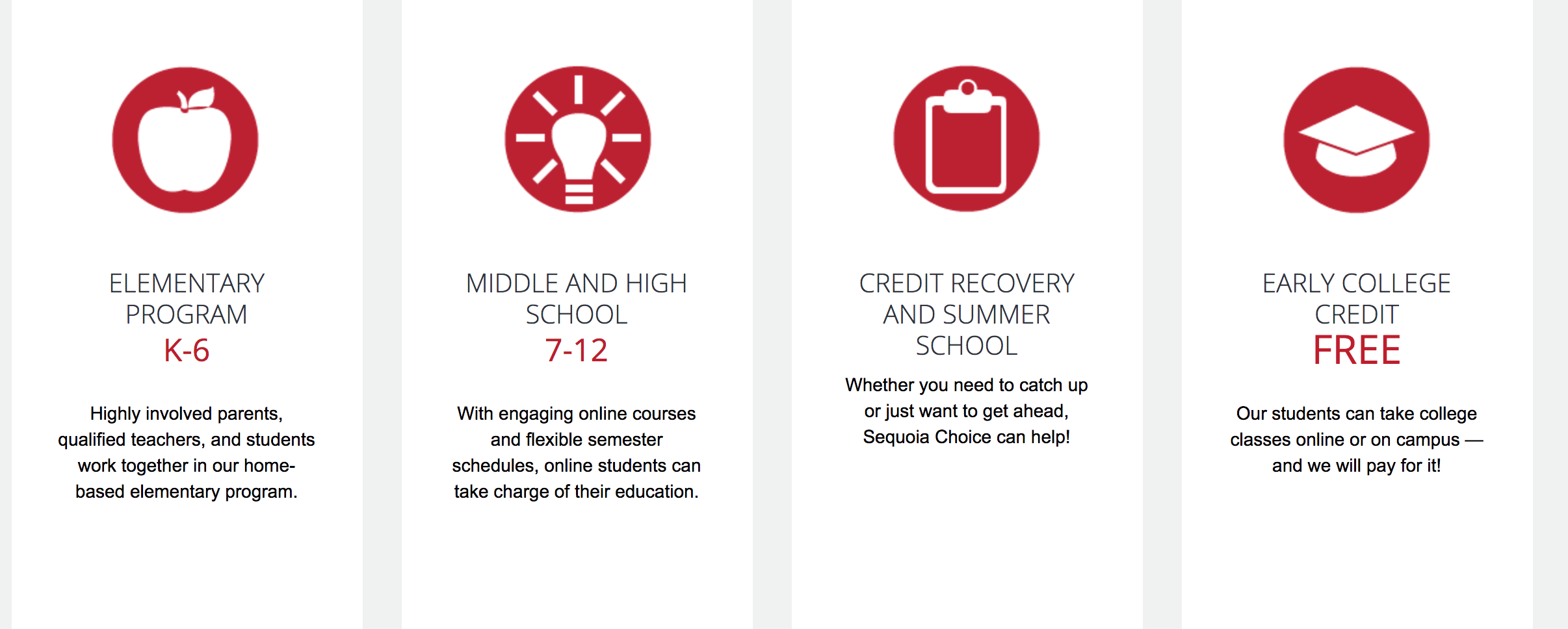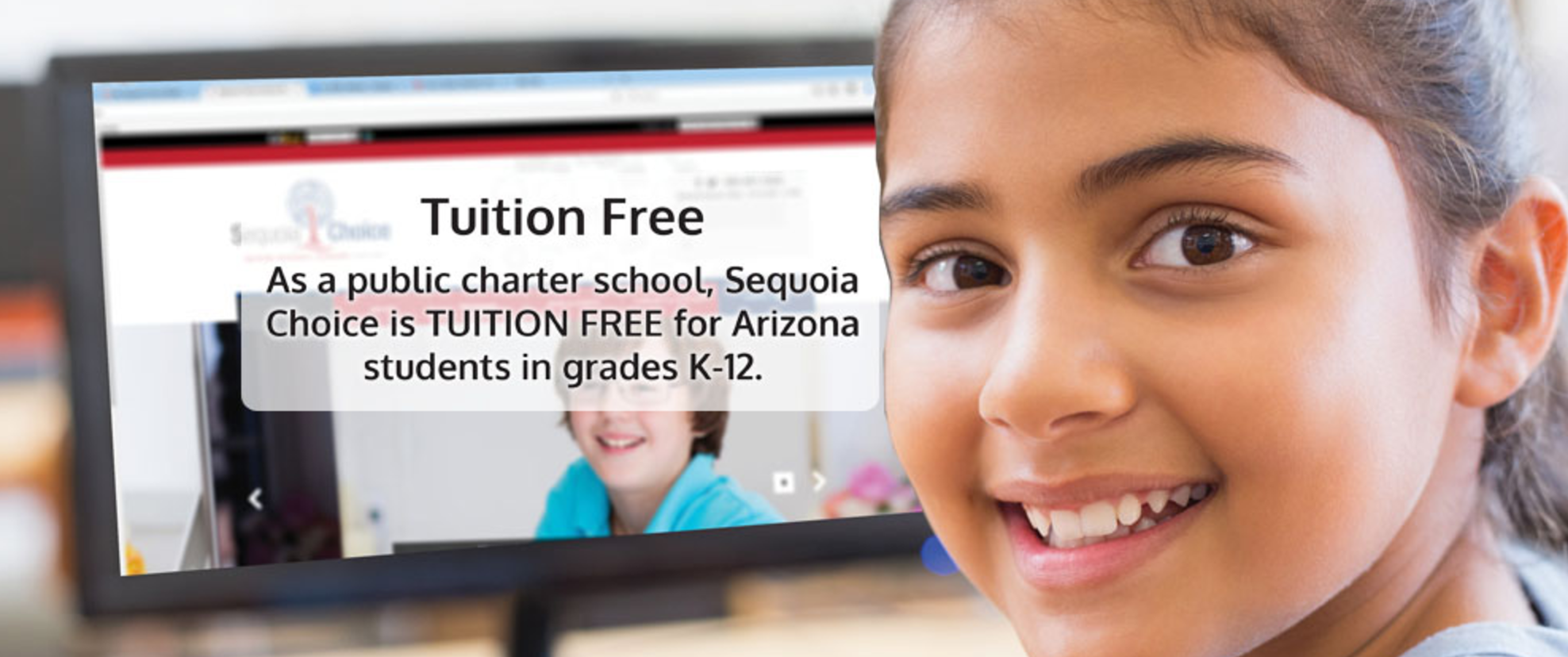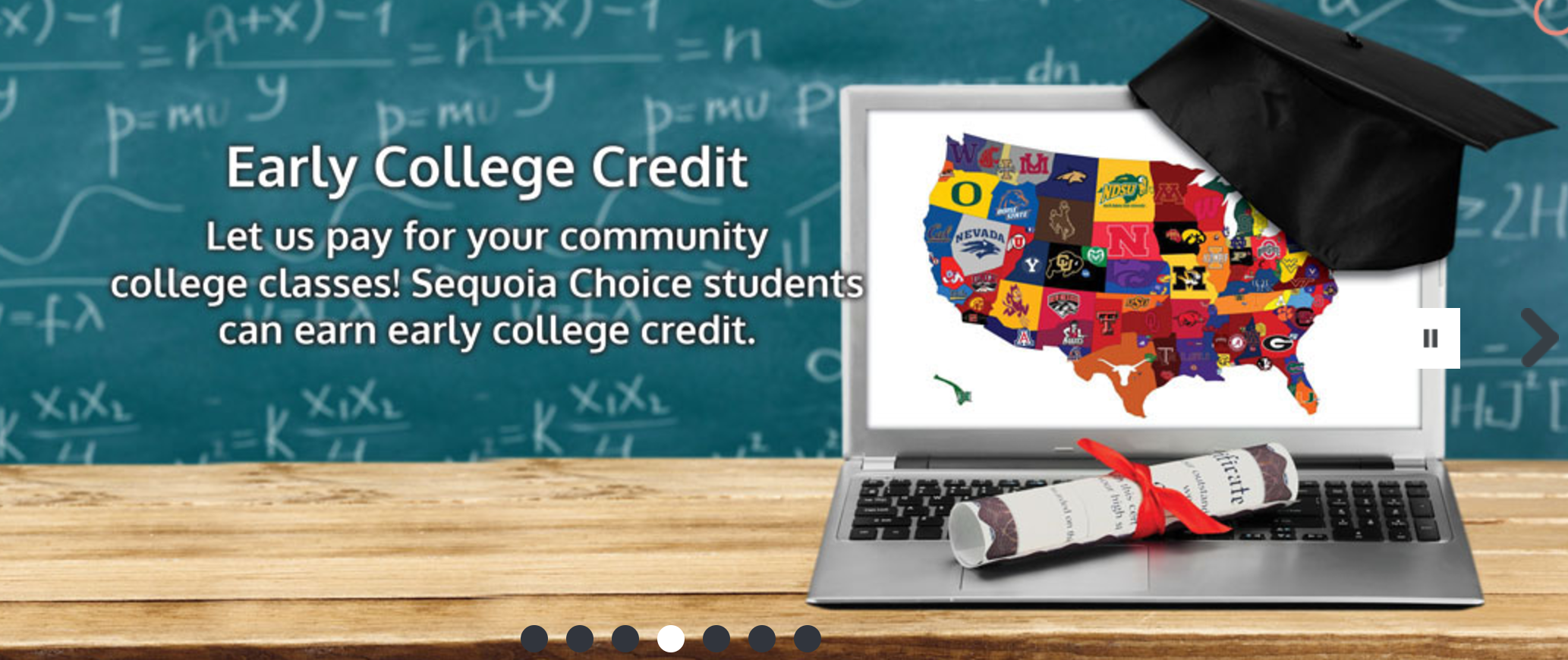Category Archives: Online Learning
Looking for Algebra 1 and Math 1 teachers!
If you are an Algebra I or Math I teacher, please see below.
WestEd, a not-for-profit educational research agency, has been funded by the U.S. Department of Education to conduct a study during the fall 2017 semester to evaluate the Querium StepWise™ Virtual Tutor for Algebra. StepWise is an online supplemental homework and quiz program that uses artificial intelligence to help students improve their mathematics problem solving. Aligned with Common Core State Standards for Mathematics, the intelligent tutoring system provides real-time, personalized tutoring to Algebra 1 students with the goal of achieving outcomes similar to those found with 1:1 tutoring.
Participating math teachers will receive stipends up to $850 for their involvement in this 8-week study! To participate, teachers must: a) be currently teaching Algebra I, and b) have at least part-time 1:1 student access to a computer, laptop, or tablet.
Please indicate your interest in participating by Friday, May 5th:
https://www.surveymonkey.com/r/QueriumStudy
Please also forward this information to any Algebra 1 teachers who you think might be interested in participating. We look forward to the opportunity to work with you!
Sincerely,
Bryan Matlen, Ph.D.
Research Associate, WestEd, STEM program quierum@wested.org
FREE Distance Learning for all of Arizona
Teaching At Home/Addition
Once your student understands counting with manipulatives and identifies where whole numbers fall on a number line, you can add using both of this visuals. Start with adding 1+1, put out two beans and push the one and one together. The student should come up with 2. Have the child count the one and one and then count it again as 2. Show the numbers with dots on a paper. One dot plus one dot equals two dots. Now add 2+1 and move through the same process.
1+1, 2+1. 3+1, 4+1, 5+1, 6+1…
Then add 1+2 and look at 2+1 again to show student that 1+2 and 2+1 gives you the same number of beans or dots. This is COMMUTATIVE PROPERTY. Shows that you can add in either direction and get the same thing.
Move to the number line now. Put your finger or a pencil on the number 1. Adding one means moving right by one number. This will also show that 1+1=2. Show it with beans, dots and number line for several examples.
Go back and ask if 4+5 = 5+4 to revisit commutative property.
Continue to practice single digit addition until student feels confident.
Understand Yourself & Others through Maslow
Each day we try to better understand the people and the world around us. Learning about ourselves and others is a normal part of our daily living. Maslow’s Hierarchy of Needs began as far back as 1943. Today, the needs have changed a bit as the world evolves. Changes have been made accordingly. Understanding basic needs is a great way to simplify how we deal with ourselves and others. Please watch the video. ~Sandy
McLeod, S. A. (2014). Maslow’s Hierarchy of Needs. Retrieved from www.simplypsychology.org/maslow.html
Maslow wanted to understand what motivates people. He believed that people possess a set of motivation systems unrelated to rewards or unconscious desires.
Maslow (1943) stated that people are motivated to achieve certain needs. When one need is fulfilled a person seeks to fulfill the next one, and so on.
The earliest and most widespread version of Maslow’s (1943, 1954) hierarchy of needs includes five motivational needs, often depicted as hierarchical levels within a pyramid.

This five stage model can be divided into basic (or deficiency) needs (e.g. physiological, safety, love, and esteem) and growth needs (self-actualization).
The deficiency, or basic needs are said to motivate people when they are unmet. Also, the need to fulfil such needs will become stronger the longer the duration they are denied. For example, the longer a person goes without food the more hungry they will become.
One must satisfy lower level basic needs before progressing on to meet higher level growth needs. Once these needs have been reasonably satisfied, one may be able to reach the highest level called self-actualization.
Every person is capable and has the desire to move up the hierarchy toward a level of self-actualization. Unfortunately, progress is often disrupted by failure to meet lower level needs. Life experiences, including divorce and loss of job may cause an individual to fluctuate between levels of the hierarchy.
Maslow noted only one in a hundred people become fully self-actualized because our society rewards motivation primarily based on esteem, love and other social needs.
The original hierarchy of needs five-stage model includes:
1. Biological and Physiological needs – air, food, drink, shelter, warmth, sex, sleep.
2. Safety needs – protection from elements, security, order, law, stability, freedom from fear.
3. Love and belongingness needs – friendship, intimacy, affection and love, – from work group, family, friends, romantic relationships.
4. Esteem needs – achievement, mastery, independence, status, dominance, prestige, self-respect, respect from others.
5. Self-Actualization needs – realizing personal potential, self-fulfillment, seeking personal growth and peak experiences.

Maslow posited that human needs are arranged in a hierarchy:
‘It is quite true that man lives by bread alone — when there is no bread. But what happens to man’s desires when there is plenty of bread and when his belly is chronically filled?
At once other (and “higher”) needs emerge and these, rather than physiological hungers, dominate the organism. And when these in turn are satisfied, again new (and still “higher”) needs emerge and so on. This is what we mean by saying that the basic human needs are organized into a hierarchy of relative prepotency’ (Maslow, 1943, p. 375).
The expanded hierarchy of needs:
It is important to note that Maslow’s (1943, 1954) five stage model has been expanded to include cognitive and aesthetic needs (Maslow, 1970a) and later transcendence needs (Maslow, 1970b).
Changes to the original five-stage model are highlighted and include a seven-stage model and a eight-stage model, both developed during the 1960’s and 1970s.
1. Biological and Physiological needs – air, food, drink, shelter, warmth, sex, sleep, etc.
2. Safety needs – protection from elements, security, order, law, stability, etc.
3. Love and belongingness needs – friendship, intimacy, affection and love, – from work group, family, friends, romantic relationships.
4. Esteem needs – self-esteem, achievement, mastery, independence, status, dominance, prestige, managerial responsibility, etc.
5. Cognitive needs – knowledge, meaning, etc.
6. Aesthetic needs – appreciation and search for beauty, balance, form, etc.
7. Self-Actualization needs – realizing personal potential, self-fulfillment, seeking personal growth and peak experiences.
8. Transcendence needs – helping others to achieve self actualization.
Self-actualization
Instead of focusing on psychopathology and what goes wrong with people, Maslow (1943) formulated a more positive account of human behavior which focused on what goes right. He was interested in human potential, and how we fulfill that potential.
Psychologist Abraham Maslow (1943, 1954) stated that human motivation is based on people seeking fulfillment and change through personal growth. Self-actualized people are those who were fulfilled and doing all they were capable of.
The growth of self-actualization (Maslow, 1962) refers to the need for personal growth and discovery that is present throughout a person’s life. For Maslow, a person is always ‘becoming’ and never remains static in these terms. In self-actualization a person comes to find a meaning to life that is important to them.
As each person is unique the motivation for self-actualization leads people in different directions (Kenrick et al., 2010). For some people self-actualization can be achieved through creating works of art or literature, for others through sport, in the classroom, or within a corporate setting.
Maslow (1962) believed self-actualization could be measured through the concept of peak experiences. This occurs when a person experiences the world totally for what it is, and there are feelings of euphoria, joy and wonder.
It is important to note that self-actualization is a continual process of becoming rather than a perfect state one reaches of a ‘happy ever after’ (Hoffman, 1988).
Maslow offers the following description of self-actualization:
‘It refers to the person’s desire for self-fulfillment, namely, to the tendency for him to become actualized in what he is potentially.
The specific form that these needs will take will of course vary greatly from person to person. In one individual it may take the form of the desire to be an ideal mother, in another it may be expressed athletically, and in still another it may be expressed in painting pictures or in inventions’ (Maslow, 1943, p. 382–383).
Maslow (1968): Some of the characteristics of self-actualized people
Although we are all, theoretically, capable of self-actualizing, most of us will not do so, or only to a limited degree. Maslow (1970) estimated that only two percent of people will reach the state of self actualization. He was particularly interested in the characteristics of people whom he considered to have achieved their potential as persons.
By studying 18 people he considered to be self-actualized (including Abraham Lincoln and Albert Einstein) Maslow (1970) identified 15 characteristics of a self-actualized person.
Characteristics of self-actualizers:
1. They perceive reality efficiently and can tolerate uncertainty;
2. Accept themselves and others for what they are;
3. Spontaneous in thought and action;
4. Problem-centered (not self-centered);
5. Unusual sense of humor;
6. Able to look at life objectively;
7. Highly creative;
8. Resistant to enculturation, but not purposely unconventional;
9. Concerned for the welfare of humanity;
10. Capable of deep appreciation of basic life-experience;
11. Establish deep satisfying interpersonal relationships with a few people;
12. Peak experiences;
13. Need for privacy;
14. Democratic attitudes;
15. Strong moral/ethical standards.
Behavior leading to self-actualization:
(a) Experiencing life like a child, with full absorption and concentration;
(b) Trying new things instead of sticking to safe paths;
(c) Listening to your own feelings in evaluating experiences instead of the voice of tradition, authority or the majority;
(d) Avoiding pretense (‘game playing’) and being honest;
(e) Being prepared to be unpopular if your views do not coincide with those of the majority;
(f) Taking responsibility and working hard;
(g) Trying to identify your defenses and having the courage to give them up.
The characteristics of self-actualizers and the behaviors leading to self-actualization are shown in the list above. Although people achieve self-actualization in their own unique way, they tend to share certain characteristics. However, self-actualization is a matter of degree, ‘There are no perfect human beings’ (Maslow,1970a, p. 176).
It is not necessary to display all 15 characteristics to become self-actualized, and not only self-actualized people will display them. Maslow did not equate self-actualization with perfection. Self-actualization merely involves achieving ones potential. Thus, someone can be silly, wasteful, vain and impolite, and still self-actualize. Less than two percent of the population achieve self-actualization.
Educational applications
Maslow’s (1968) hierarchy of needs theory has made a major contribution to teaching and classroom management in schools. Rather than reducing behavior to a response in the environment, Maslow (1970a) adopts a holistic approach to education and learning. Maslow looks at the entire physical, emotional, social, and intellectual qualities of an individual and how they impact on learning.
Applications of Maslow’s hierarchy theory to the work of the classroom teacher are obvious. Before a student’s cognitive needs can be met they must first fulfill their basic physiological needs. For example a tired and hungry student will find it difficult to focus on learning. Students need to feel emotionally and physically safe and accepted within the classroom to progress and reach their full potential.
Maslow suggests students must be shown that they are valued and respected in the classroom and the teacher should create a supportive environment. Students with a low self-esteem will not progress academically at an optimum rate until their self-esteem is strengthened.
APA Style References
Hoffman, E. (1988). The right to be human: A biography of Abraham Maslow. Jeremy P. Tarcher, Inc.
Kenrick, D. T., Neuberg, S. L., Griskevicius, V., Becker, D. V., & Schaller, M. (2010). Goal-Driven Cognition and Functional Behavior The Fundamental-Motives Framework. Current Directions in Psychological Science, 19(1), 63-67.
Maslow, A. H. (1943). A Theory of Human Motivation. Psychological Review, 50(4), 370-96.
Maslow, A. H. (1954). Motivation and personality. New York: Harper and Row.
Maslow, A. H. (1962). Towards a psychology of being. Princeton: D. Van Nostrand Company.
Maslow, A. H. (1968). Toward a Psychology of Being. New York: D. Van Nostrand Company.
Maslow, A. H. (1970a). Motivation and personality. New York: Harper & Row.
Maslow, A. H. (1970b). Religions, values, and peak experiences. New York: Penguin. (Original work published 1964)
Tay, L., & Diener, E. (2011). Needs and subjective well-being around the world.Journal of Personality and Social Psychology, 101(2), 354.
Critical evaluation
The most significant limitation of Maslow’s theory concerns his methodology. Maslow formulated the characteristics of self-actualized individuals from undertaking a qualitative method called biographical analysis.
<
He looked at the biographies and writings of 18 people he identified as being self-actualized. From these sources he developed a list of qualities that seemed characteristic of this specific group of people, as opposed to humanity in general.
From a scientific perspective there are numerous problems with this particular approach. First, it could be argued that biographical analysis as a method is extremely subjective as it is based entirely on the opinion of the researcher. Personal opinion is always prone to bias, which reduces the validity of any data obtained. Therefore Maslow’s operational definition of self-actualization must not be blindly accepted as scientific fact.
Furthermore, Maslow’s biographical analysis focused on a biased sample of self-actualized individuals, prominently limited to highly educated white males (such as Thomas Jefferson, Abraham Lincoln, Albert Einstein, William James, Aldous Huxley, Gandhi, Beethoven).
Although Maslow (1970) did study self-actualized females, such as Eleanor Roosevelt and Mother Teresa, they comprised a small proportion of his sample. This makes it difficult to generalize his theory to females and individuals from lower social classes or different ethnicity. Thus questioning the population validity of Maslow’s findings.
Furthermore, it is extremely difficult to empirically test Maslow’s concept of self-actualization in a way that causal relationships can be established.
Another criticism concerns Maslow’s assumption that the lower needs must be satisfied before a person can achieve their potential and self-actualize. This is not always the case, and therefore Maslow’s hierarchy of needs in some aspects has been falsified.
Through examining cultures in which large numbers of people live in poverty (such as India) it is clear that people are still capable of higher order needs such as love and belongingness. However, this should not occur, as according to Maslow, people who have difficulty achieving very basic physiological needs (such as food, shelter etc.) are not capable of meeting higher growth needs.
Also, many creative people, such as authors and artists (e.g. Rembrandt and Van Gough) lived in poverty throughout their lifetime, yet it could be argued that they achieved self-actualization.
Contemporary research by Tay & Diener (2011) has tested Maslow’s theory by analyzing the data of 60,865 participants from 123 countries, representing every major region of the world. The survey was conducted from 2005 to 2010.
Respondents answered questions about six needs that closely resemble those in Maslow’s model: basic needs (food, shelter); safety; social needs (love, support); respect; mastery; and autonomy. They also rated their well-being across three discrete measures: life evaluation (a person’s view of his or her life as a whole), positive feelings (day-to-day instances of joy or pleasure), and negative feelings (everyday experiences of sorrow, anger, or stress).
The results of the study support the view that universal human needs appear to exist regardless of cultural differences. However, the ordering of the needs within the hierarchy was not correct.
“Although the most basic needs might get the most attention when you don’t have them,” Diener explains, “you don’t need to fulfill them in order to get benefits [from the others].” Even when we are hungry, for instance, we can be happy with our friends. “They’re like vitamins,” Diener says about how the needs work independently. “We need them all.”
STLMOMS share great apps!
STL Moms- Educational apps and websites for children
POSTED 9:00 AM, JANUARY 15, 2016, BY DAN CARCIONE
ST. LOUIS, MO (STLMoms)- There’s an app for everything these days, including apps to teach our children.
Pediatrician Dr. Kathleen Berchelmann of the St. Louis Children’s Hospital shared with us her top children’s educational apps for 2016:
1. Khan Academy: Khan Academy now collaborates with the U.S. Department of Education and myriad public and private educational institutions to provide ‘a free, world-class education for anyone, anywhere’. Cost: Free; Ads: None
2. Awarded Google`S ‘Best of the best’ in 2013, Your progress is displayed in a graph form after every lesson. Cost: Free; Ads: None
3.EdX: EdX provides college and high school courses from leading universities online for free.Cost: Free, extra fees apply for official transcripts and college credit; Ads: None
4.IXL (website and app): IXL has been massively updated in the past year to incorporate more subjects and allow kids to skip through content if they get enough questions right. Your child can do a few sets of problems per day for free, or you can subscribe for $9.99 per month or $79 per year for a family membership. Cost: Free limited use or $9.99/month; Ads: None
5.Typing.com: Typing.com offers a comprehensive keyboarding/touch typing course that is appropriate for children from Kindergarten through college. . Cost: Free; Ads: May be removed for $15
6.Scratch and Scratch Jr.: Scratch is a free online tool and app designed by MIT to help kids learn programming. Cost: Free; Ads: None
7.BiblioNasium: Now used in many schools, this website will convince even the most reluctant reader to love reading. Cost: Free; Ads: Digital books are recommended and sold on site
8.Dragon Box: Better than anyone else, Dragon Box has succeeded in making math into a very fun game. Cost: $4.99-$7.99 in the App Store
9.Hooda Math: Hoodamath.com is a free online game site with more than 700 math and logic games. Cost: Free; Ads: Present throughout site but not offensive
10.Quizlet AND Brainscape: These two separate companies provide a similar free service: create-your-own flashcards and quizzes and then practice your content online.
11.PBSKids: Every young child I know plays PBSKids; it’s loaded with characters they know and it`s free with no ads.
12.ABCMouse: ABCMouse.com is a preschool and Kindergarten online educational website that offers a more comprehensive curriculum
13.Bitsboard: Alligator Apps is a company that has created an entire line of early childhood learning apps,
14.Stack the States and Stack the Countries: Voted best kids app for iPad,
15.Classic games with two or more players: Chess, Checkers, Connect 4, Othello, Battleship, and all those classic logic games you played as a child are available on tablets.
16.Time to get off the computer and do some chores!
Online Learning That Engages Students
Passion In Education has been utilizing Edgenuity since it’s opening in 2010. We have assisted many students and parents. Students need options in education to meet their needs. If your student is currently struggling and needs another form of learning, check out The Bridge Virtual Academy for support courses, getting ahead, advancing in courses not offered in your current school and more.
Click here for a demo.
Enjoy the learning process. Find what works best for your learning style.
DUAL CREDITS/COLLEGE COURSES/FREE TEST PREP
Teachers, Parents, and Students
Are you wanting to get FREE ACT Prep in Math, Science, and English?
Are you looking for FREE homework help in English, Science, Math, Social Studies and more?
Are you looking for FREE Professional Development in Flipped Classroom, IPAD, Chromebook or Virtual Classroom Certification?
How about College Classes that are students can take in place of high school courses that can count as dual credit? (Check with your high school counselor.)
How about getting ahead in college courses or taking courses that are full on your campus? (Check with your college counselor.)
ONLINE SAVES TIME AND MONEY! Check out https://www.sophia.org
How Accreditation Works from Best School
For more information: www.bestschools.com
How Accreditation Works and Why It Matters
TABLE OF CONTENTS
How do I check for accreditation?
You can use the U.S. Department of Education website to check that a school is accredited. The government also keeps a list of accredited programs, institutions, and residencies. Gather accreditation information from government resources rather than the school itself. Schools do occasionally mislead students, as shown in this Cleveland Plain Dealer article about nursing students whose school took years to reveal its accreditation problems.
Do not be fooled by accreditation agencies with similar-sounding names. Your school should be accredited by a group whose name exactly matches what is on the list. There are some warning signs that a school is merely a diploma mill that wants your money in exchange for a worthless degree. If a school promises that it has no tests, or that you can get a degree in a few weeks or months, be suspicious. Likewise, beware of schools that charge a flat fee for your degree. Reputable schools usually charge by credit hour or semester.
If you are still uncertain, you can contact the attorney general in the state where the school is located to make sure that it is legitimate and accredited.
Why is accreditation important?
The government uses accreditation to determine whether a school is worth the tuition price. Federal financial aid, including aid for members of the military, is available only for students at schools that have been accredited by a recognized agency. The same goes for most state financial aid.
If you need to transfer schools, credits from an unaccredited school may not be accepted. Accreditation does not guarantee that transfer credits will be accepted at another school but does make it more likely.
The inability to transfer credits is a problem that both states and the national government have been trying to fix, according to an NBC News story. It now takes an average of 3.8 years for full-time students to earn an associate’s degree and 4.7 years for students to earn a bachelor’s degree, in large part because of credits that don’t transfer. But change is coming. The state of Florida now guarantees that credits earned at Florida community colleges will transfer to four-year state universities, and other states are considering similar policies.
If you plan to transfer schools, consider which schools you might transfer to, and check with them about credits.
Employers usually prefer that students have a degree from an accredited institution, especially when they are earning an online degree, which some employers view with skepticism. The difficulty in finding a job with a questionable degree is shown by the high loan-default rate of students at for-profit schools. For-profit schools enroll 11 percent of students but make up 44 percent of student-loan defaults, according to an L.A. Times article. Some students at these schools say that they cannot find a job with their degree or that they can only find a low-paying job. Some of these schools are accredited, so graduation and job-placement rates are valuable to know as well.
Is all accreditation the same?
There are two types of accreditation. Institutional accreditation recognizes that all parts of an institution are accredited. Specialized, or programmatic, accreditation is an evaluation of certain programs, schools, or departments at an institution.
Institutional accreditation agencies fall into two categories: regional and national. Regional associations accredit degree-granting colleges and universities. National associations usually accredit schools that provide trade and technical training. Colleges and employers often consider regional accreditation more rigorous. Thus, colleges are more likely to accept transfer credits from regionally accredited schools. Also, employers might prefer a degree from a regionally accredited school, particularly when a degree has been earned online.
The U.S. Secretary of Education does recognize some state agencies for the approval of public postsecondary vocational education and nursing education.
How does programmatic accreditation work?
The U.S. Department of Education provides a list of associations that offer specialized accrediting for the the following types of programs:
- arts and humanities
- community and social services
- education
- health care
- legal
- personal care and services
This specialized accreditation may be in addition to the school’s institutional accreditation. It helps ensure that educational programs will prepare students for licensure or certification in fields where it is required. For example, the Accreditation Commission for Education in Nursing uses accreditation to create common standards for nurses, promote peer review, and promote educational access and equity. Similarly, the American Bar Association has a special council to accredit freestanding law schools, including those online. Check your field of interest to see whether your school should have extra accreditation.
Check accreditation, and then dig deeper
Checking a school’s accreditation should be a first step in your research. You can also learn about a school’s quality from students who are currently enrolled and employers you might want to work for. Check graduation and job-placement rates, too. Then you can begin your education knowing that you are getting what you are paying for.
Need Education Options?
The Bridge Virtual Academy is offering courses via Edgenuity/ParK City Independent for students interested in high school credits. Each semester course is $285 plus a one time $50 registration fee! Start any time. Eighteen weeks to complete each course but can move as quickly as you desire. Live teacher connects with students. Pacing calendar on dashboard to help keep students on task. Mentoring is available at no additional cost. Course is taught via a video teacher. Please check with yours school counselor before signing up for a course to make sure the credits will transfer.
Homeschooling has just become much easier. The Bridge Virtual Academy also offers the courses on the list below to parents interested in homeschooling their children in courses created for 6th – 12th grade plus.
YOUR TIME. YOUR PACE. YOUR CHOICE. YOUR SPACE!
To view the scope and sequence of a course, go to the website www.passionineducation.com Find the course you are considering and click.
For more information, contact Sandy Carl at scarl@passionineducation.com.
















